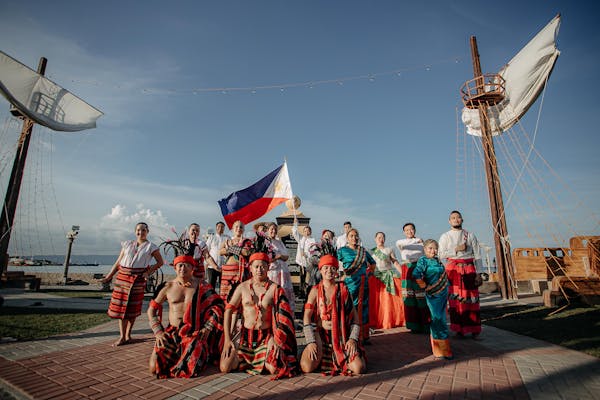Are you ready to discover the hidden gem of the Philippines? Look no further than Tabo, a small town located in the province of Abra. Despite its size, Tabo boasts a rich history and culture waiting to be explored. From ancient traditions to mouth-watering cuisine, this town has something for everyone. Join us as we dive into the fascinating world of Tabo and uncover all it has to offer!
The History of Tabo
Tabo has a history that dates back centuries, with records indicating it was once a stronghold of the Tingguians, an indigenous group in the northern part of the Philippines. During this time, Tabo served as a center for trade and commerce between different communities.
In 1818, Tabo became one of the first towns established by Spanish colonizers in Abra province. Under Spanish rule, Tabo was transformed into a hub for agriculture and mining activities. The town continued to prosper during the American occupation in the early 1900s when more infrastructure developments were introduced.
During World War II, Tabo played a significant role as both Japanese and American forces fought for control over its rich resources. Despite being heavily damaged during these battles, Tabo has since recovered and is now considered one of Abra’s most important municipalities.
Today, visitors can still see remnants of its past through historic landmarks such as St. Jude Thaddeus Church which dates back to 1827 or explore local museums showcasing artifacts from different periods throughout history
The culture of Tabo
Tabo is a small town in the province of Abra, located in the northern part of the Philippines. Despite its size, Tabo possesses a rich culture that has been passed on from generation to generation.
One aspect of Tabo culture is their traditional dances and music. The town celebrates various festivals throughout the year where locals showcase their talents in performing these cultural dances accompanied by traditional instruments such as gongs and drums.
Another exciting facet of Tabo’s culture is its unique craftsmanship. The people here are skilled artisans who create intricate handwoven fabrics called “labels”. This fabric is made using an ancient technique passed down from pre-colonial times.
Religion also plays a significant role in Tabo’s culture. The majority of the population practices Catholicism, but there are still those who follow indigenous beliefs and traditions.
Hospitality is deeply ingrained within the people of Tabo. Visitors are welcomed with open arms and treated like family members. It’s common for locals to offer food or drinks to guests as a sign of respect and appreciation.
Tabo’s culture reflects its history and values – rooted in tradition yet embracing modernity at the same time.
The traditions of Tabo
Tabo is a town in the province of Abra, Philippines that is steeped with rich traditions. One of the most notable traditions in Tabo is their annual celebration of the Kawayan Festival. This festival highlights the importance of bamboo as a sustainable resource and showcases various products made from it.
Another tradition in Tabo is their practice of Bayanihan, which means working together to achieve a common goal. This spirit of cooperation can be seen during community events such as fiestas and weddings where everyone pitches in to help prepare food, decorate, and set up.

The people of Tabo also have strong religious beliefs which are reflected in their customs and practices. They celebrate important Catholic holidays such as All Saints’ Day and Christmas with great fervor by attending mass, decorating their homes with lights and parols (star-shaped lanterns), and preparing special dishes for feasts.
In addition to these traditions, Tabo also has its own version of street dancing called “tulip” which involves dancers wearing colorful costumes while performing intricate movements to traditional music. This form of dance has been passed down from generation to generation and remains an integral part of the town’s culture.
Being immersed in Tabo’s traditions gives visitors a deeper appreciation for local customs that have been preserved for centuries.
The food of Tabo
The town of Tabo boasts a rich culinary heritage that is deeply rooted in the local culture. One of the most popular dishes in Tabo is called “binaural,” which is a chicken soup made with coconut water and various herbs and spices. This dish has been passed down from generation to generation, and it remains a staple on many dining tables.
Another favorite among locals and visitors alike is “pinikpikan,” which involves beating a live chicken before cooking it. The practice dates back to ancient times when tribes would prepare for rituals by consuming this dish, believing that the energy released from the bird’s body would help them connect with their ancestors.
Aside from these unique dishes, Tabo also offers an array of seafood options due to its proximity to the sea. You can indulge yourself in fresh fish soups or grilled squid caught just off the coast.
To accompany these flavorful meals, there are also plenty of refreshing drinks available such as homemade ginger ale or sugarcane juice straight from local plantations.
Exploring the food culture in Tabo will undoubtedly be an enjoyable experience for any food enthusiast looking for new flavors and experiences. With its diverse range of traditional and modern dishes, you’ll find something here that satisfies your taste buds while immersing yourself in Philippine cultural cuisine at its finest!
The people of Tabo
The people of Tabo are known for their friendliness and hospitality. They welcome visitors with open arms and make them feel at home in their community.
One interesting fact about the people of Tabo is that they have a strong sense of community. They work together to achieve common goals, such as organizing festivals or building communal facilities like schools and churches.
Another notable trait of the people from this region is their creativity. The locals are skilled artisans who create beautiful handicrafts using traditional methods passed down through generations. These crafts include woven baskets, pottery, and wood carvings.
In terms of language, Tagalog is widely spoken in Tabo but there are also other dialects used by some groups within the community. Despite these differences, everyone coexists peacefully while respecting each other’s culture and traditions.
Moreover, family plays an important role in the lives of the residents in Tabo. Family ties are valued highly which can be seen during social gatherings where relatives come together to bond over food and stories.
The people of Tabo possess unique qualities that reflect their rich history – one can easily see why this place remains a must-visit destination for travelers seeking authentic cultural experiences in the Philippines
Conclusion
Tabo is a hidden gem in the Philippines that truly deserves to be discovered and explored. Its rich history, vibrant culture, fascinating traditions, delectable food, and welcoming people make it a must-visit destination for anyone who wants to experience something unique and authentic.
From its ancient cave paintings to its colorful fiestas, Tabo has so much to offer in terms of cultural immersion and historical appreciation. And with the growing interest in sustainable tourism and responsible travel, Tabo is definitely a place that should be on everyone’s radar.
So if you’re planning your next adventure or looking for an off-the-beaten-path destination that will leave you in awe of our country’s diverse heritage, consider visiting Tabo. You won’t regret it!
“



